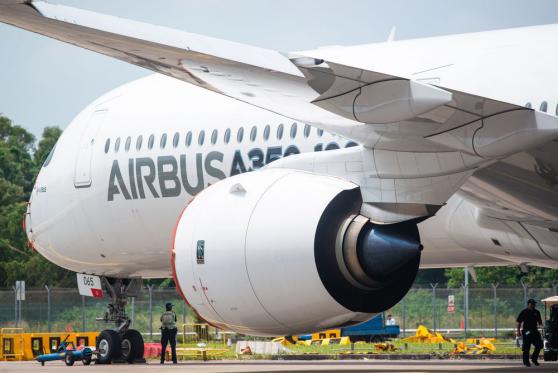Invezz.com - Rolls-Royce (LON:RR) share price suffered a harsh reversal last week as concerns about its A350 engine emerged and as global stocks crashed. The stock peaked at a record high of 504p in August and then retreated to a low of 462p, its lowest point since August 6.
Global stocks have retreated
The Rolls Royce share price crashed as global equities retreated. In London, the FTSE 100 index retreated for six consecutive days, reaching a low of £8,170, its lowest point since August 9 of this year. It has now dropped by almost 9% from its highest level this year.
US stock indices did even worse, with the Dow Jones, Nasdaq 100, and S&P 500 indices falling by 1%, 2.5%, and 1.73%, respectively. The same happened in other places, including in France, Italy, and Germany.
A key reason for the collapse is that there are signs that the global economy is softening. In the United States, the labor market softened, with the unemployment rate sitting at 4.2% and the number of jobs added in August rising by less than 150k.
China is also softening, with most banks, including JPMorgan (NYSE:JPM) and Goldman Sachs (NYSE:GS) cutting their growth projection for the year. Europe is also seeing this weak growth, with Volkswagen (ETR:VOWG_p) expected to start closing factories in Germany.
On the positive side, Rolls-Royce Holdings is relatively immune to the global economic slowdown. For one, it is in industries that are seeing robust growth. For example, defense spending is expected to continue doing well this year as the war in Ukraine and the tensions in the Middle East continue.
The company also has substantial order backlogs for its jet engines and is even struggling to fill demand. Also, it makes most of its money by servicing aircraft engines. While the airline industry is struggling, these companies will likely continue using Rolls-Royce engines.
Airbus A350 engine problem
As I have written before, an engine problem is Rolls-Royce’s biggest issue, as we saw with the Trent 1000 failure a few years ago.
To know why, you need to know how Rolls-Royce makes most of its money. It generally sells engines to airlines, often at a loss or extremely low margins. It then makes money by entering into long-term service agreements.
Rolls-Royce charges airlines by flight hours, which helps them spread their costs over a long time. Therefore, an engine failure might lead to the grounding of all aircraft, halting its revenues and increasing its operation costs.
Last week, Rolls-Royce share price crashed after Cathay Pacific grounded its Airbus A350 to inspect its engines. By the end of the week, Cathay confirmed that the engine issue affected just a handful of aircraft and that it had solved the issue. Therefore, Rolls-Royce hopes that the issue will not lead to more groundings.
Rolls Royce trades at a discount to GE
The issue came at a time when Rolls-Royce is firing on al cylinders, making it one of the best-performing companies in the FTSE 100 index.
The most recent financial results showed that Rolls-Royce’s revenue in the first half of the year rose from £6.9 billion to over £8.1 billion. This growth was driven by its three segments: civil aviation, power, and defense.
The company’s profits also continued soaring, moving from over £673 million to over £1.1 billion while its operating margin rose from 9.7% to 14%.
Most importantly, its free cash flow, which I believe is the most important figure in a company, rose to over £1.15 billion.
Rolls-Royce hopes that the momentum will continue, which will also help to justify its valuation. The company has a market cap of over $51.85 billion, making it much smaller than General Electric (NYSE:GE), which is valued at over $174 billion.
GE trades at a price-to-earnings ratio of 38 while Rolls-Royce has a valuation multiple of 16. This means that the company has more room to fill the gap. Its forward 1-year P/E ratio of 28 is much smaller than GE’s 38.
Another metric shows that its forward EV to EBITDA stands at 13.4, much smaller than GE’s 22, showing how undervalued it is since the two have similar growth numbers. It has a forward EBITDA growth of 31%, higher than GE’s drop of 2.58%.
Rolls-Royce share price forecast
The daily chart shows that the Rolls-Royce stock price peaked at 504p in August and then suffered a harsh reversal last week as the Cathay Pacific issue emerged. It has formed a small double-top chart pattern.
The stock is consolidating at the 50-day and 200-day Exponential Moving Averages (EMA). It remains above the ascending trendline that connects the lowest swing since April this year.
Therefore, the outlook for the stock is neutral for now. More gains will only be confirmed if the stock moves above last month’s high at 504p.
This article first appeared on Invezz.com
